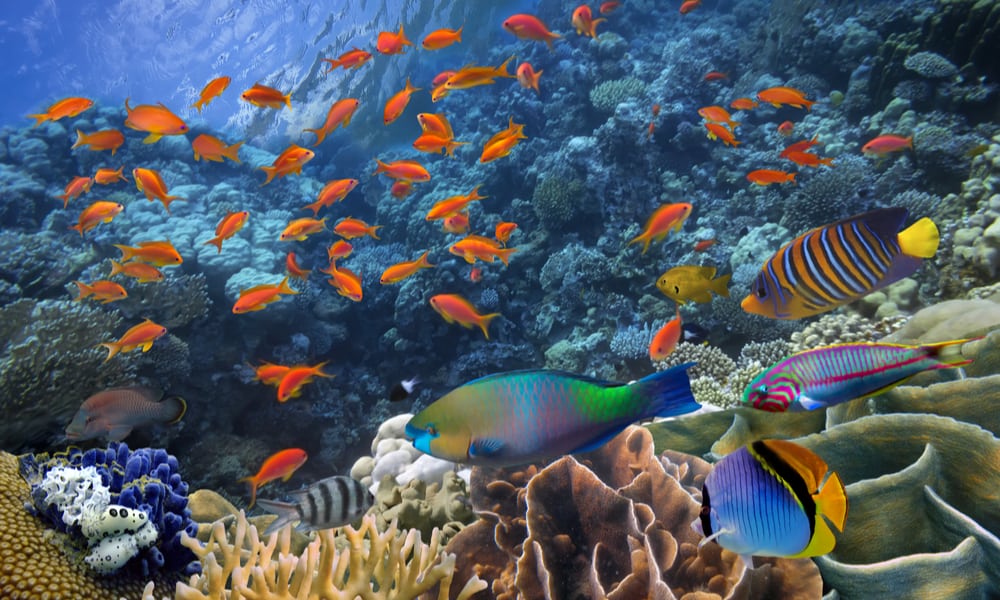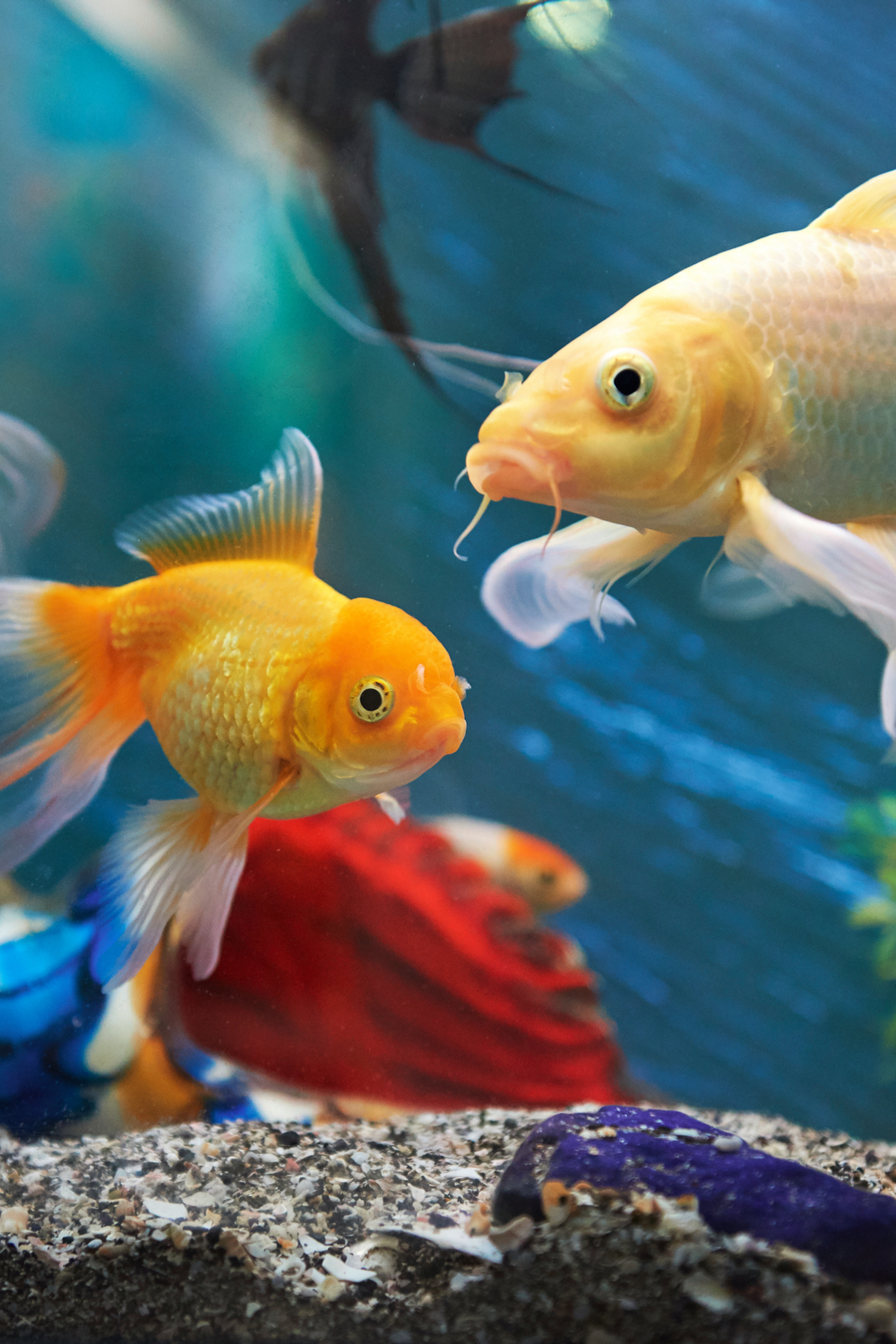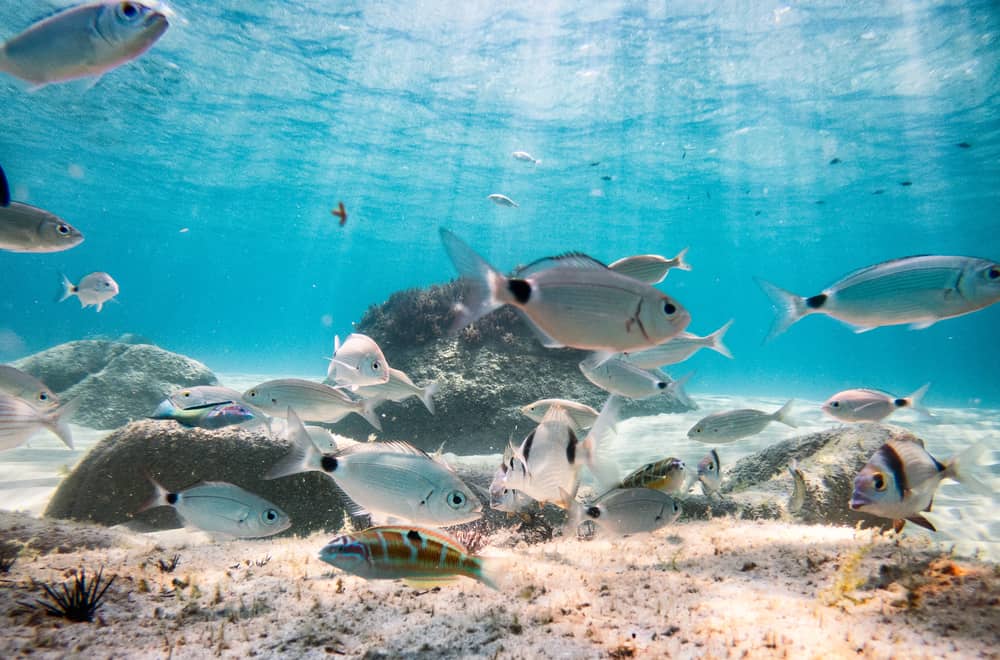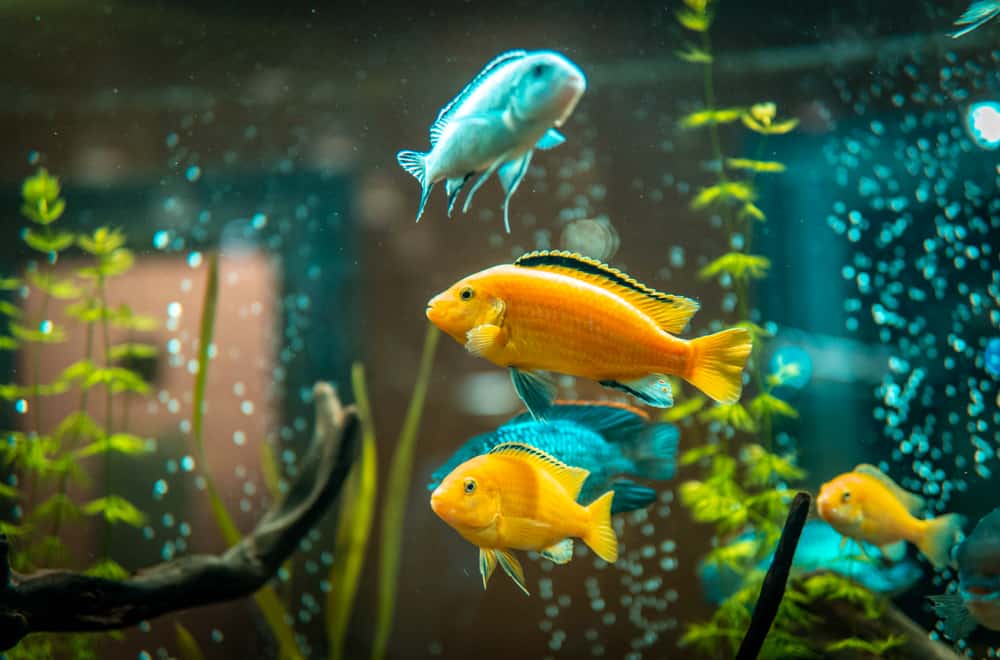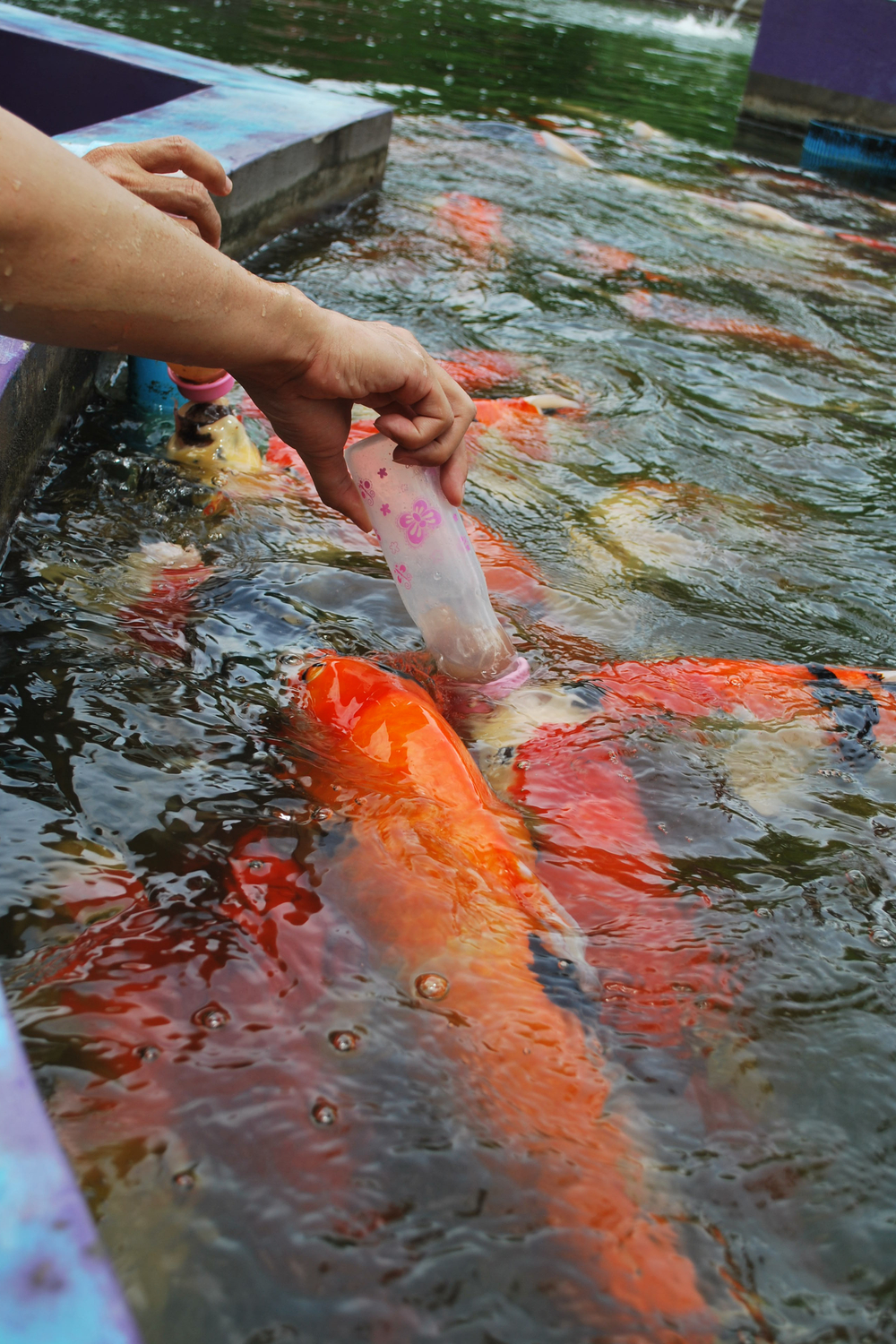Our Earth’s underwater world is both majestic and distant- the fact is that the ocean leaves a lot to be discovered. In addition, both freshwater and saltwater systems are home to thousands of different fish; mammals, crustaceans, plant life, and microorganisms.
If you desire to invite some of that blue world magic into your home, then I suggest you begin by learning a bit about its natural environment.
Fish Habits and Biology
Fish fossils date back as far as 530 million years ago. Today, we know of at least 30,000 species in the vast openness of Earth’s oceans and other water systems.
Fish use thermoregulation to regulate their body temperatures. For the most part, fish are ectotherms, meaning that their external environment affects their internal body temperature.
Structure
- Fish have skulls, a backbone, gills (for breathing), and fins. In addition to these physical characteristics, fish often have scales over their skin to help protect against injury and infection.
FUN FACT: Fish use a swim bladder to help maintain their swimming depth. This gas-filled sac is also known as the fish’s buoyancy organ.
Another unique organ that only fish have is known as its lateral line- “it contains small sensory hairs that help detect underwater vibrations.”
Fish use their skin pattern as camouflage to assist them in both ambushes and escape tactics. They can easily blend into the given environment, hiding behind plants, coral, rocks, and logs.
Migration
- Many fish migrate away from their homes during the wintertime and back in the summertime- primarily for spawning. They travel together in different size groups (depending on the species), called schools.
Lifespan
- Fish’s lifespan can vary significantly upon species, but a typical range can be between 6 and 20 years.
Reproduction
- Almost all fish reproduce sexually and undergo external fertilization, which means that large amounts of sperm and eggs are released into the waters and waiting on that magic to happen. This egg release is also known as spawning.
Fish have had millions of years of adaptation to survive in our Earth’s water world. Some of the subtopics listed above are focus areas you may want to further research before committing to a home aquarium.
What Do Fish Eat in the Wild
The majority of the fish in our Earth’s oceans are predators and will eat other fish. Others will eat plankton, and some are happy to scarf up anything along the ocean floor. For this reason, fish are either carnivorous, herbivorous, omnivorous, or limnivorous.
Whatever the food preference of your fish, you should be aware of their feeding habits in the wild and know what they typically consume to get a better idea of how to create and maintain a thriving aquarium environment.
Adult fish, in the wild, may not feed every day; these fish may even go multiple days without any food. However, smaller fish will require more frequent feeding, and fry (babies) have their own set of special feeding needs.
Let us take a look at some foods that fish from each category mentioned earlier cannot resist.
Carnivores (active hunter or scavenger)
- Live worms
- Insects
- Larvae
- Crustaceans
- Smaller fish
- Small birds
- Other mammals
Herbivores
- Plants
- Algae
Omnivores (most common aquarium-friendly fish)
- A combination of meat and vegetable matter
Limnivores (mud-eaters)
- Algae
- Other microorganisms
Fish eat lots of different things, so the key to their survival is trying to duplicate their natural environment within the confines of your aquarium. You will better equip yourself to do so after performing some preliminary research on the natural environment and eating tendencies of the fish species you are interested in.
What do Fish Eat as Pets
Aquarium life requires balance, patience, and understanding. You will want to get to know each of your resident fish well so that you can notice any visual cues that may be cause for alarm.
Vitamin and nutrient deficiency can cause several health concerns in your fish, including:
- Weakness
- Tumors
- Stunted growth
- Loss of appetite
- Cloudy eyes
- Fungal infections
In addition to this list, poor water quality and improper tank maintenance can introduce some parasites and other diseases to your underwater friends.
So let us focus on dietary and nutritional requirements for the various types of fish you may have in your tank.
- Carnivorous fish enjoy the thrill of catching live worms and feeder fish. After all, this hunting activity most closely resembles their wilder instincts.
- Herbivorous fish enjoy their share of flake food and algae wafers. You can also supplement their diet with fruit and vegetable matter.
- Omnivorous fish can either be fed meat or plant food, or both.
In any case, be aware of the protein content of the food you are about to give your fish. You can regularly supplement your fishy friends’ regular diet with “live food, frozen food, and freeze-dried food to keep your fish interested and healthy.”
Dry fish food is available in various forms, including flakes, crisps, granules, tablets, wafers, sticks, pellets, and supplements.
Frozen or freeze-dried options are an excellent way to preserve protein content and other nutrients.
You can also purchase feeding blocks that dissolve small amounts of food each day if you are going on vacation.
Some of the best-known brands of fish food on the market today include:
- TetraMin Tropical Flakes
- New Life Spectrum Thera-A
- TetraVeggie Algae Wafers
- Omega One
This list is by no means exhaustive, but just some names you can look up as you begin your search for a suitable feeding manufacturer.
Tips for Feeding Fish
First and foremost, you need to be aware of the different fish that inhabit your aquarium, along with their individualized eating preferences. Food variety is an essential factor to consider in feeding so that your fish can benefit from a diverse range of minerals and nutrients.
Size
- The food you feed your fish should roughly be the same size as their mouths. For instance, larger fish will be primarily uninterested in tiny flakes and crumbles, whereas small fish cannot eat larger foods.
Quantity
- In most cases, plan only to feed what your fish can consume in about two to three minutes. Although this will require some patience and observation, you will prevent overfeeding- generally the most significant cause for health issues in aquarium life.
NOTE: Uneaten food can cause toxic spikes in the ammonia and nitrate levels of your tank. It can also cause the water in your tank to become cloudy, produce a pungent smell, create surface froth, accelerate algae growth, quickly clog filter media; and, even birth white fungus growth on the bottom surface.
Feeding Time and Intervals
- Typically, fish will either feed in the morning or at dusk. So, it is safe to say that two feedings per day ought to be sufficient.
- The caveat to this general rule of thumb comes into play if you have herbivorous or omnivorous fish, a nocturnal species, or fish with slightly higher metabolic rates than most.
FUN FACT: Did you know that your tank’s water temperature can influence how often and how much you need to feed your fish? A higher water temperature will raise your fish’s metabolic rate because it must expend twice as much energy at rest to stay alive.
Things to Avoid
- Overfeeding best refers to anytime you give your fish more food than they want or need in one feeding. Allowing food to remain stagnant in your fish tank will lead to many other undesirable health and cleanliness issues.
Cleaning and Maintenance
- I advise that you regularly clean tank decorations, rearrange plants and other accessories, and frequently change the water to control the debris in your favorite aquarium.
PRO TIP: Perform partial water changes regularly (weekly) instead of holding out for your tank to ‘look’ dirty, and then perform a complete water change.
- You may even consider adding bottom-feeders to your aquarium, such as loaches, catfish, dwarf shrimp, and even snails which help keep tank algae under control by removing uneaten food and plant debris from the surface bottom.
Other Special Considerations
Whether you have a single fishbowl or a pond-sized aquarium, some of the following questions may help you meet the specific conditions necessary for your fish to survive:
- Am I housing different feeders together?
- What temperature should the water be?
- Should I have staggered feeding times?
- What is the optimal pH level for my particular fish?
- How often should I change my aquarium’s filters?
- Do my fish have enough space?
- How big will my fish grow?
- Is the fish species I have aggressive or territorial, or can I house them together with another species?
You cannot overlook the significance of a proper feeding regimen to maintain your fishy friends’ health and wellness.
Summary
Besides being a beautiful centerpiece within your home, studies have shown that people can also receive several therapeutic benefits from being surrogate parents to their fishy friends.
The fact is that aquariums can enhance your life, whether in your home, at work, in your child’s classroom, or even at the local coffee shop.
Be sure to study the fish that live therein, and ensure that you provide a thriving environment in their home away from home.
If you have any questions or concerns about fish feeding, please comment below.
